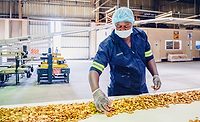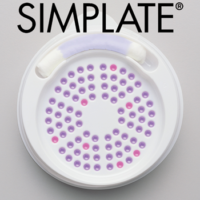Beginning with the August/September issue in 1995, Food Testing & Analysis was born. The decision to create the publication was made to meet the needs of laboratories in food testing and nutritional labeling given the success of our parent company, The Target Group, with an environmental testing publication.
Fast-forward a few years to when traditional laboratory tests were moving into the plant and production line, and our decision to add a subheading to the title: “Science-Based Solutions for Food Safety and Quality Professionals Worldwide.” It was a simple and effective way to signal that we were evolving in step with the industry.
In the December 2000/January 2001 issue, the decision was made to change the magazine’s name to Food Safety Magazine. This change came about as the result of publisher Stacy Atchison’s presence at the Institute of Food Technologists’ Food Safety and Quality Conference in Orlando, FL. She was approached by a gentleman who said that when he asked someone at another national food trade publication why there was no “food safety” magazine, they pointed to a copy of Food Testing & Analysis and said, “There is.” As she sat down with him to discuss the emergence and acceptance of the term “food safety” for describing the market that incorporates the systems, programs and policies that ensure the safety of the food we eat, she made the decision that Food Testing & Analysis would become Food Safety Magazine, making the publication’s scope and content more accessible and inclusive.
A digital edition of the print magazine was begun in 2008, followed by the FSM: eDigest in 2010. Our companion site—Food Safety Connect—was built in 2011, an online marketplace of food safety solutions that brings companies and customers together. An app was introduced in 2012, and our social media presence continues to grow by leaps and bounds. We’ve developed an incomparable network of subscribers and followers around the world that includes over 10,000 followers on Twitter. Finally, our website was redesigned and relaunched in January 2013 and now averages over 50,000 unique visitors per month, tapping into our timely news and popular content, both current and archived.
But as much as we’ve grown and evolved over these past 20 years, the scope of food safety has undergone an even bigger evolution. We’ve asked the one Editorial Advisory Board member who has been with us since issue #1, Tom Sauer, to describe his impressions of our development and of food safety in general.
Twenty Years of Thoughts
I still remember receiving the phone call around 1994 from a person named Julie [Julie Larson Bricher] who identified herself as the editor of a new magazine that was preparing for introduction. It was going to be called Food Testing & Analysis. She asked if I would consider becoming a member of the Editorial Advisory Board for this new trade magazine. I was flattered, but as a quality control director (quality assurance was still a foreign concept to many companies) and not a lab director, I had only a limited knowledge of special, nonroutine testing performed on foods. And I knew that the routine tests my company ran daily on milk and milk products weren’t something that was going to excite the average reader.
But things were a bit different then. Regular microbial testing that was performed by companies usually served to just satisfy regulatory requirements for overall sanitation or was used simply as a release mechanism at best. Companies used rework fairly freely, stored raw ingredients anywhere they saw fit in the warehouse and kept their labels as clean and inconspicuous as possible.
Then things started changing, especially with regard to the consumer’s relationship with the food manufacturer. The Nutrition Labeling and Education Act of 1990 was coming into fruition around 1994 to 1995, and consumers were beginning to be much more aware of what they were buying from a nutritional standpoint.
However, at about the same time, things like gluten intolerance and food allergies started to pique the nation’s collective interest. In 1995, the Food Allergy Research and Resource Program was formed as a cooperative venture between the University of Nebraska and seven founding industry charter members. Other similar organizations were formed not only to raise awareness but also to hold food companies accountable for what they were delivering to consumers.
At the same time, testing and analysis started to mean something new. There were new technologies emerging, not the least of which was ATP-bioluminescence and rapid allergen testing. Imagine suddenly being able to walk out to your production line, swabbing presumably clean equipment and determining whether your cleaning procedures were adequate to begin production. All of this in a matter of minutes or even seconds. Today, food companies use ATP swabs daily to ensure that their production lines are ready to go and allergen test kits to validate their cleaning processes and systems.
Dealing with allergens and allergen control has probably been one of the biggest areas of adjustment for many food companies. Heightened consumer awareness along with stricter labeling requirements have forced food companies to be far more disciplined to prevent the danger of allergen-related cross-contamination. In fact, during the second quarter of 2013, 65 percent of the recalls falling under U.S. Department of Agriculture jurisdiction and 60 percent of those falling under U.S. Food and Drug Administration jurisdiction were due to undeclared allergens.[1]
Regulations have changed significantly as well since the first issue of Food Testing & Analysis, especially at the federal level. September 11, 2001, brought us the Bioterrorism Preparedness and Response Act of 2002, and a newfound public concern for food safety fueled by large-scale recalls and contaminated ingredients from foreign countries brought us the Food Safety Modernization Act of 2011.
Food safety has become a distinct component of a food company’s quality assurance program, not just a sideline. In addition, from a bottom-line standpoint, food safety is a key driver of risk mitigation.
And along the way, Food Testing & Analysis responded to the fundamental changes taking place in the food industry by changing its name and primary focus to food safety. Not only did the magazine undergo a name change, but it also has exploited new communications technologies by offering both print and digital versions, webinars covering broad topics critical to the industry and many other resources.
I should probably mention that the Food Safety Magazine website (www.food-safety.com) has a link titled “Testing & Analysis” for those who want to be a bit nostalgic. However, if you click on it, you will quickly see how far the industry, and the discipline we call food safety, has really progressed.
Looking Ahead
We’ve all come a long way in the past 20 years. And continued developments and improvements in food safety testing and detection technologies will ensure that we will make huge strides in the next decades. We look forward to reaching those who depend on a fundamental knowledge of food safety to ensure their brand’s survival. In this digital age, it is easier than ever to share resources and content, and we hope you will help mentor those in the food industry who need such information. Safer food and the continued growth of our industry depend on collaboration from all sectors.
With milestones like a 20-year anniversary, it is natural to reflect on not just what has happened but all the people who have shared the journey and indeed made the journey possible. The Food Safety Magazine team extends well beyond the members of The Target Group to everyone who has contributed editorial, every advertiser and all members of the Food Safety Magazine community, in print and online. Thank you!
We couldn’t have made it here without you.
Barbara VanRenterghem, Ph.D., is the editorial director of Food Safety Magazine. She can be reached at barbara@food-safety.com.
Tom Sauer is a food safety consultant and a member of the Editorial Advisory Board of Food Safety Magazine. He can be reached at tmsauer@gmail.com or www.tomsauer.com.
Reference
1. According to figures from Stericycle ExpertRECALL™.




